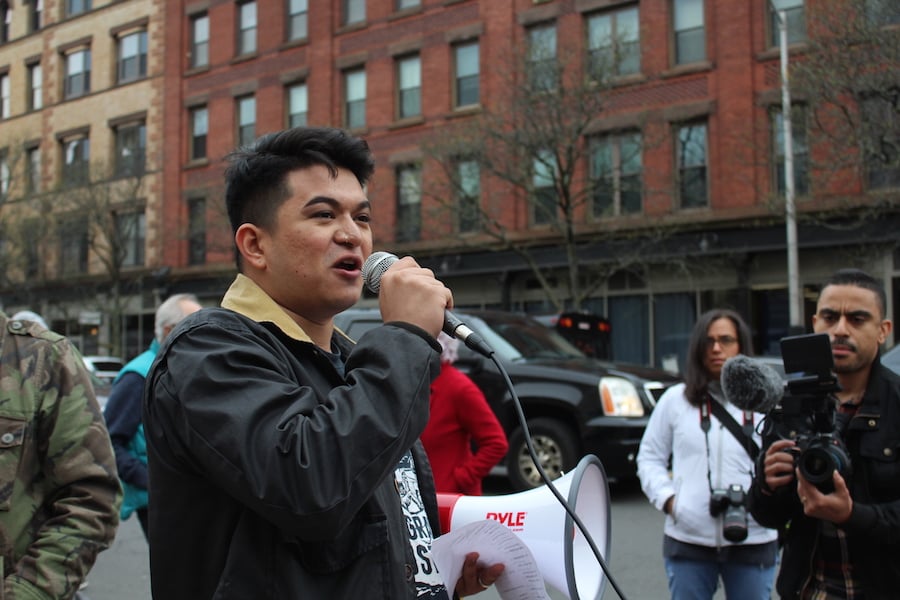
Hartford | Immigration | Unidad Latina en Acción | Arts, Culture & Community
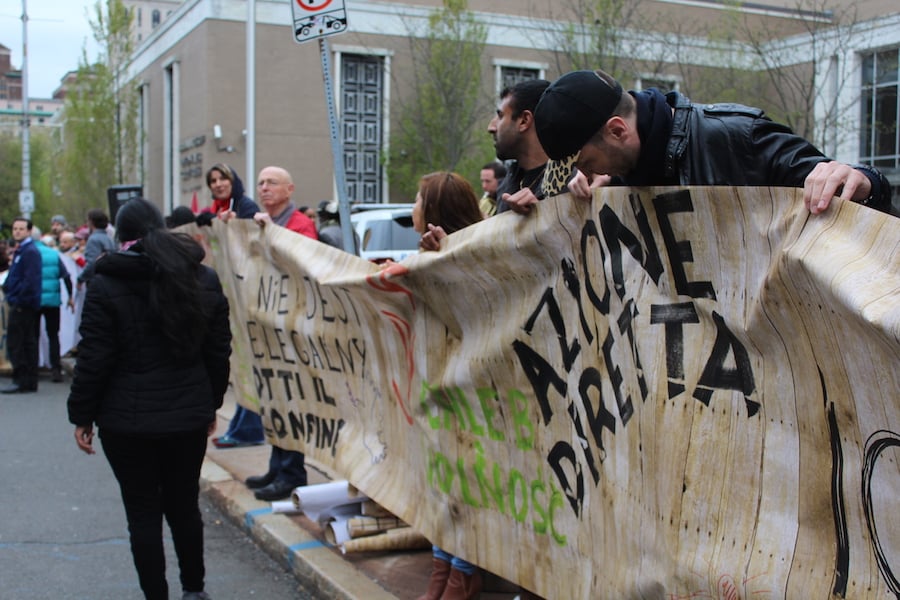
| Melanie Espinal Photos. |
Hartford—Over 200 people formed a symbolic wall in front of an Immigrations and Customs Enforcement (ICE) building. Then they tore it down to make a point.
That took place Wednesday afternoon outside the Abraham A. Ribicoff Federal Building downtown, as activists, lawyers and labor organizers from Unidad Latina en Acción (ULA), Hartford Deportation Defense, Industrial Workers of the World-CT, Connecticut Immigrant Rights Alliance (CIRA) and others gathered for a May Day rally and protest on the city’s Main Street.
In particular, activists said they were there to protest Immigrations and Customs Enforcement (ICE), fight for fairer wages for immigrants, and protect the state’s Trust Act.
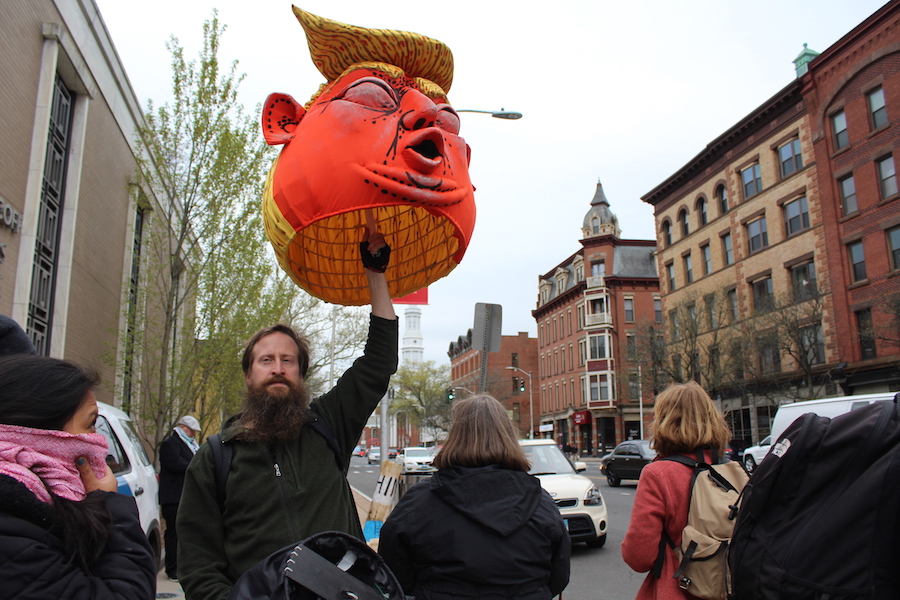
| Among political artwork that people brought to the event was a a Donald Trump effigy that, later in the protest, lifted its hands while following protestors. |
May Day is an international celebration of workers’ rights that originated in 1886, when protesters in Chicago went on strike for an eight-hour work day and riots ensued. In New Haven—as in many American cities—it has also been celebrated as "el Día sin inmigrantes" or Day Without Immigrants, during which immigrant-owned and operated businesses close to show their economic impact on the city.
Wednesday, both New Haven and Hartford activists took a different tack than they have in years past. In the early afternoon, a caravan of around 10 cars left New Haven, making their way to Hartford by 4 p.m. After starting at First and Summerfield Church, riders stopped in the Long Wharf parking lot to draw bold-colored slogans with markers on their car windows. Some slogans read, “Workers struggles have no borders” and “no one is illegal on stolen land.”

Once in Hartford, activists assembled to unravel a wall, on which they have been working for weeks.
Their wall was made not from barbed wire, but from a 1,200-foot poster banner with wood planks printed onto it. On the paper, members of ULA, Hartford Deportation Defense and others had written messages denouncing both ICE and recent, anti-immigrant policies of the Trump administration.
“Build borders, not walls!” read one statement. “Chinga la Migra!” read another.
Many cars passing through the area honked in unison to protestors’ chants, showing their support. Others took the moment to verbalize their disagreement. One man shouted from his car, scrutinizing a poster that said no one is illegal.
“Just come here like I did,” he said. He told protestors to get their facts straight before he drove off.
Another man chimed in and said, “Trump 2020.”
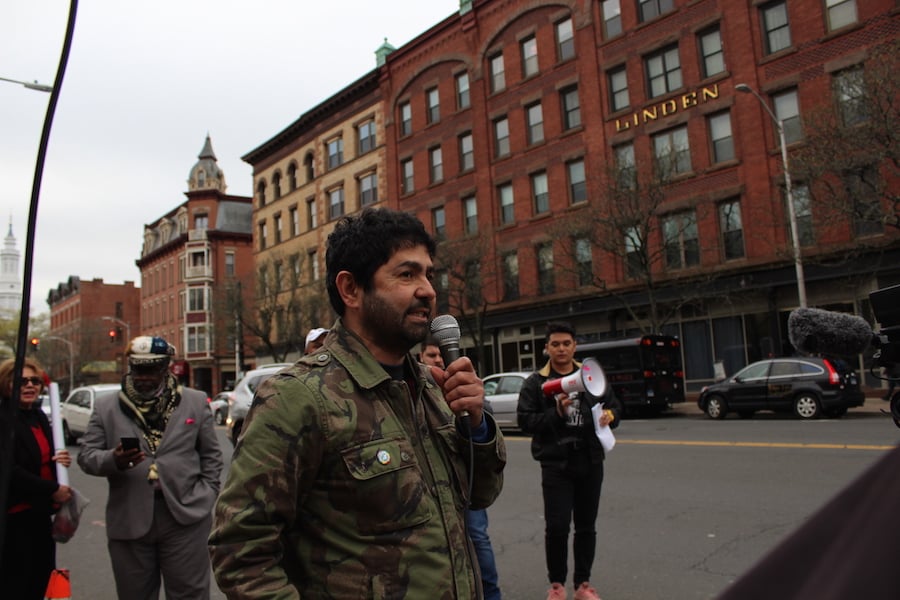
| New Haven immigration rights activist John Lugo introduced all the speakers at the May Day protest in Hartford, May 1. |
The protest was led mostly by New Haven-based activist John Lugo, who founded ULA in the early 2000s and remains involved in the organization as activists Vanesa Suarez and Jesús Morales-Sanchez continue much of the work as well.
“The wall that this president is intending to build is not going to stop migration to this country,” Lugo said.
Lugo said the Trump administration’s border militarization, denial of citizenship and sheer volume of deportations have been assaults to immigrants. If the wall goes up, the people will find a way to take it down. As if on cue, protesters tore the poster apart after stretching it down both ends of the building’s block on Main Street.
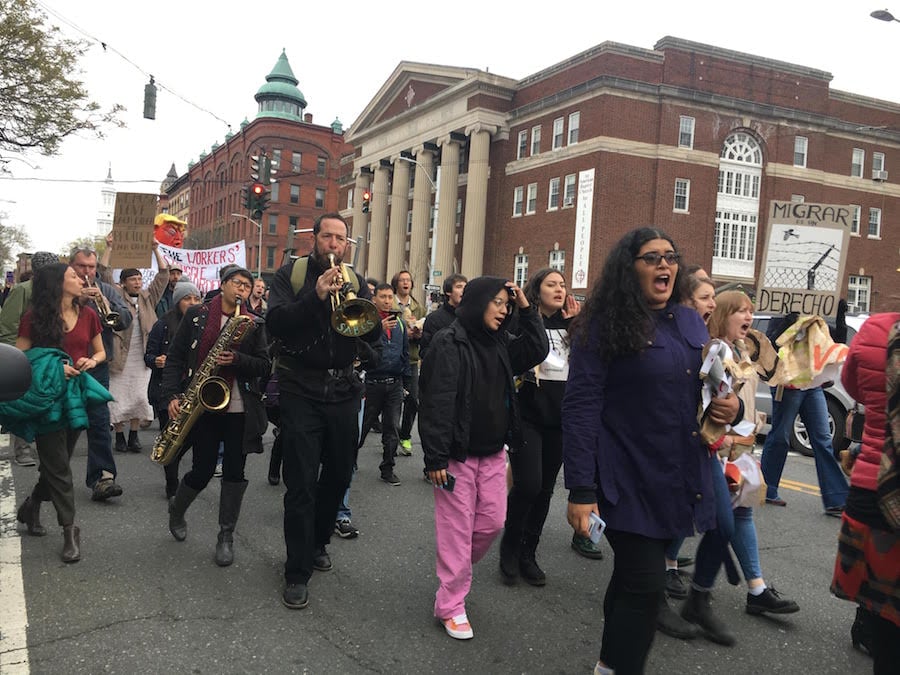
| Protesters march, with music to buoy them. Members of the Hartford Hot Several band played throughout the protest. Valve trombone player Josh Michtom said the hope with playing music is to energize the people. |
Aside from protesting the wall, several speakers spoke out against ICE tactics and advocated for stronger enforcement of The Connecticut Trust Act, which prohibits state and local law enforcement from honoring ICE’s requests to detain someone, or from notifying ICE that a person may be undocumented.
Speakers also denounced police brutality, immigrant worker abuses and American imperialism in Venezuela. "No justice/no peace!" they yelled at one point.
Lugo said those struggles are particularly important to talk about on this day of May Day because they unite poor people and people of color.
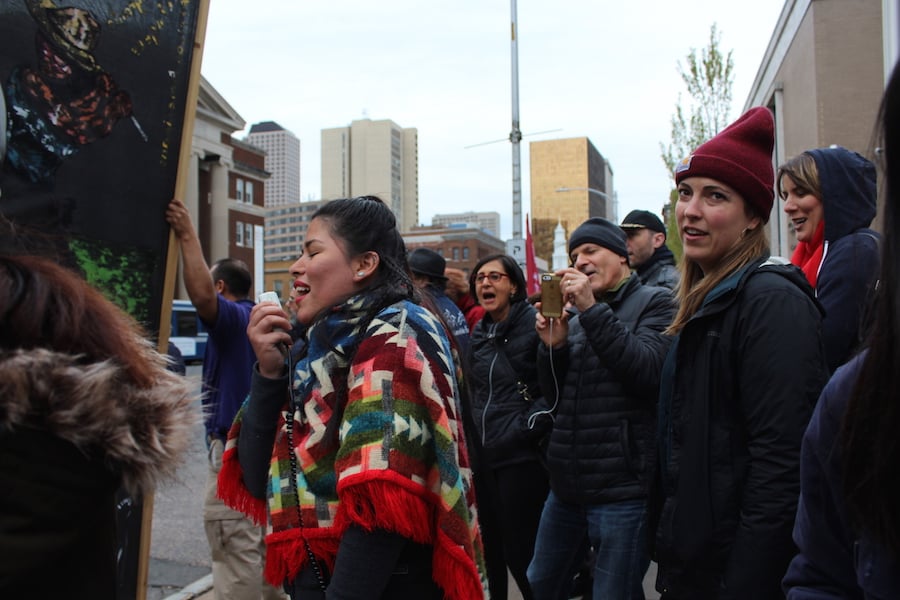
| Vanesa Suarez. CitySeed Director Amelia Reese Masterson is behind her. |
“We have the power and we should take that back,” said Vanesa Suarez, a community organizer who in addition to ULA is also involved in the Connecticut Bail Fund. Last fall, she began plans for an all-immigrant worker-owned pupusa cooperative to fight wage inequality and sexual misconduct in businesses—by providing an alternative workspace for those who are most often the victims.
In her own life, Suarez advocates against the abuse of American workers, who are seen as expendable and often underpaid. She said if people rallied everyday like they did during the protest, the whole economy would be paralyzed.

| Wesleyan senior Tomas Rogel. |
Wesleyan senior Tomas Rogel, who is studying sociology, represented the United Students Labor/Action Coalition of Wesleyan. The group has become an unofficial union that organizes the university’s workers, many of whom are immigrants. Rogel called the workers an integral part of the Wesleyan community.
The coalition advocates for workers who claim they are overworked, are not able to take lunch breaks and can’t get all of their work done within the time that's allocated to them. After several worker cuts, Rogel said employees have had to take on a lot more of responsibilities, sometime having to clean one to two dorm buildings by themselves for a little as $13.
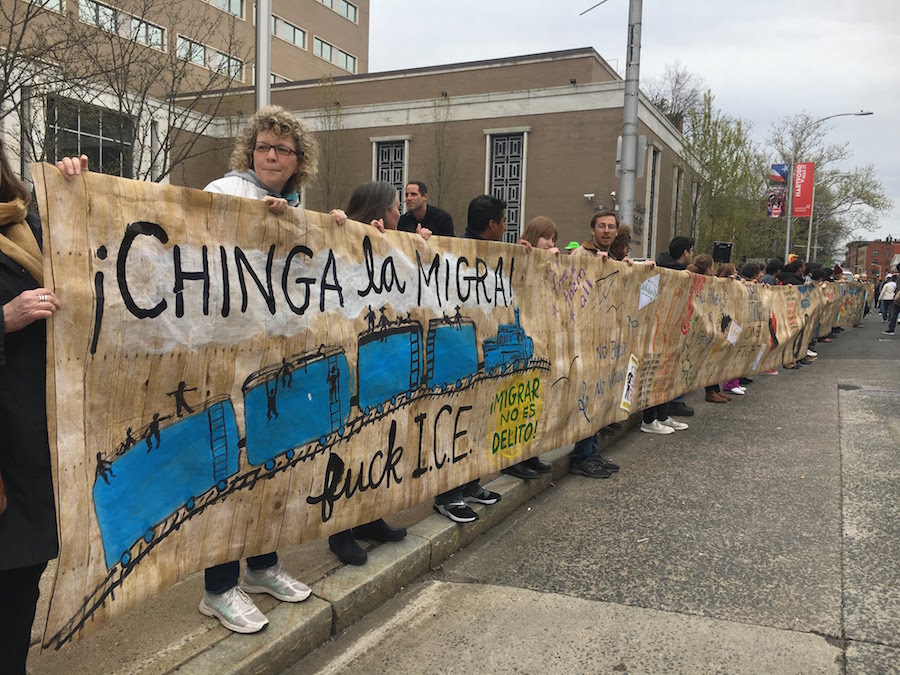
Rogel said he hopes that at the very least, protests like these start conversations about the ways in which people’s human rights are being stepped on. At Wesleyan, he said that people have started to understand that when labor rights are protected for brown people, black people and immigrants in general, the rights of people who don't fit into these categories are also protected.
For him, the fight is personal and political. Rogel’s family is from El Salvador. He's seen firsthand that in the U.S., many immigrants are part of a labor force in which they are deemed unskilled and undeserving of a livable wage.
“We do deserve a livable wage,” he said. “We are people and we have families that we need to keep afloat and we’re really no different than any other worker out there. And so yes, immigration rights and workers rights are very much close to together. And they should be looked at critically, not just as an issue at my university but as a systemic issue.”

